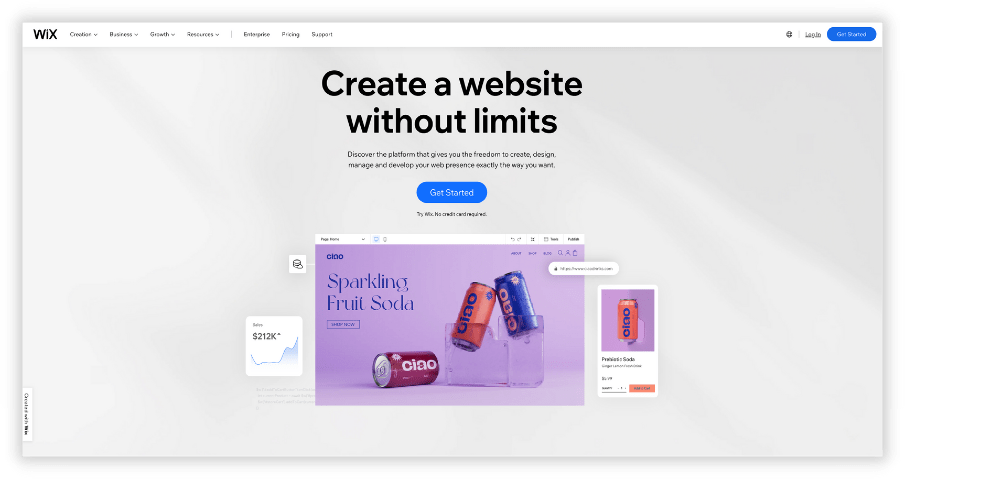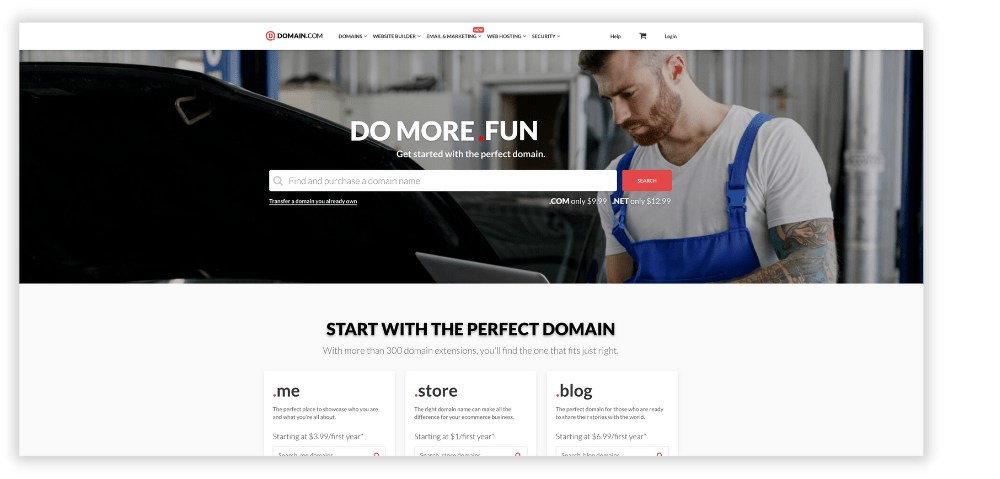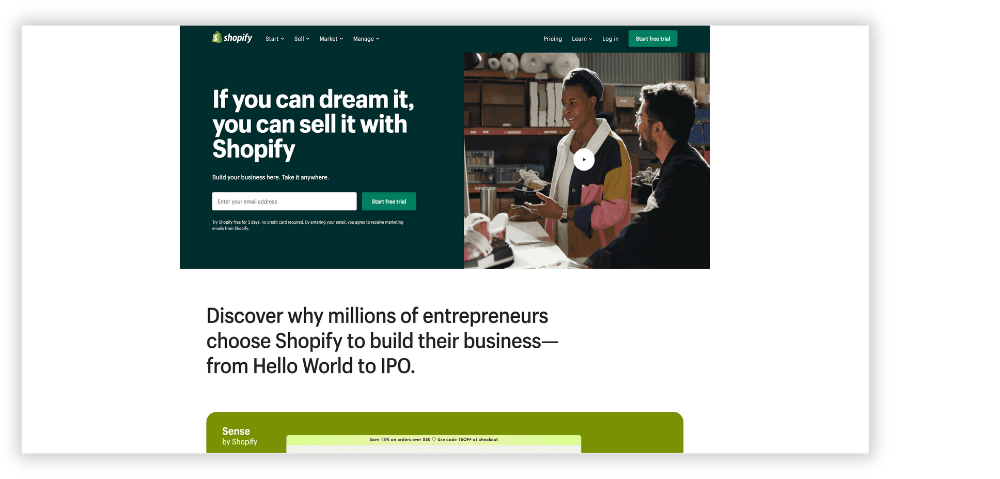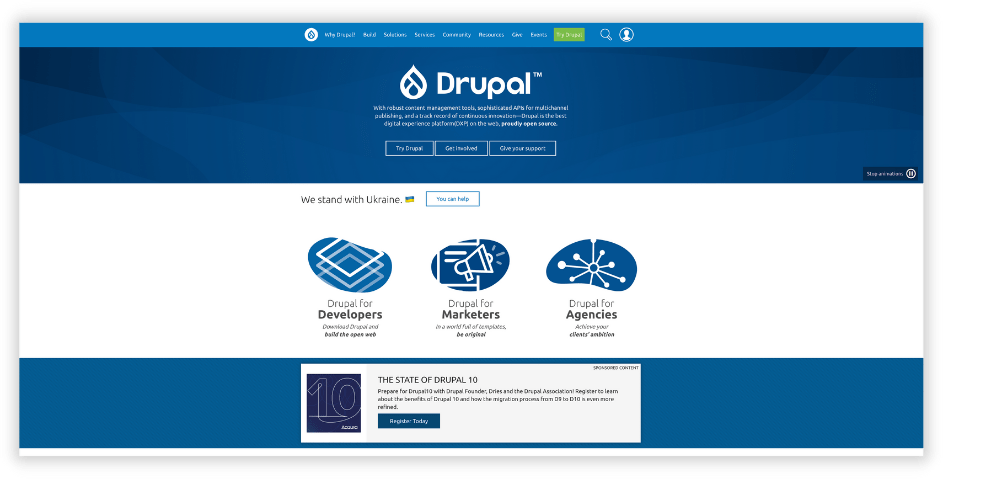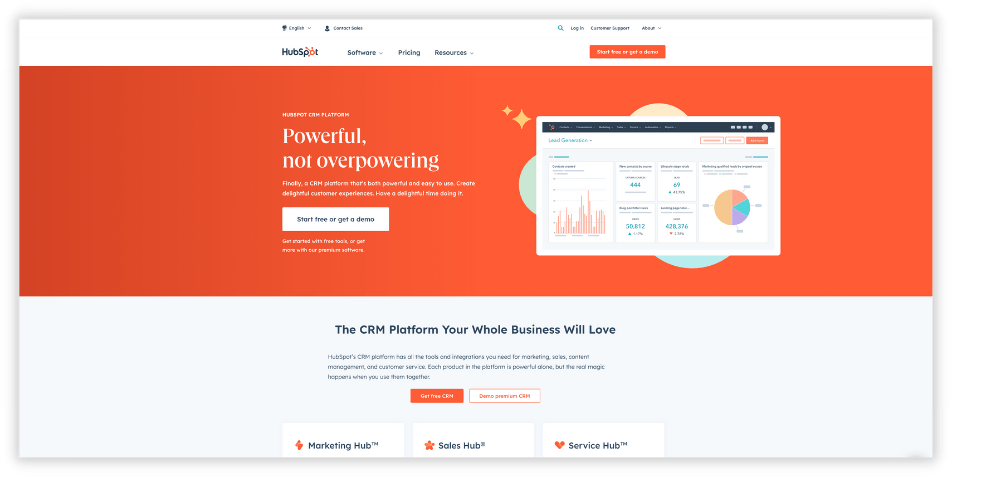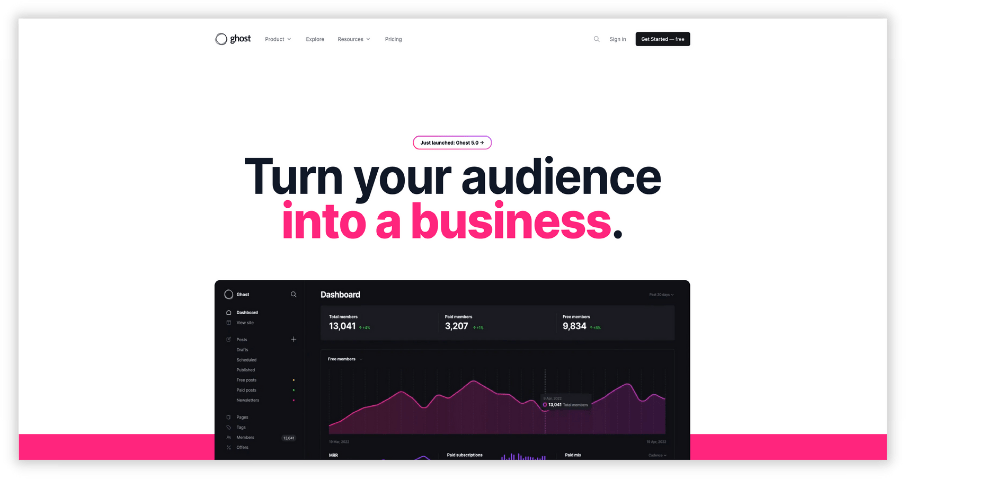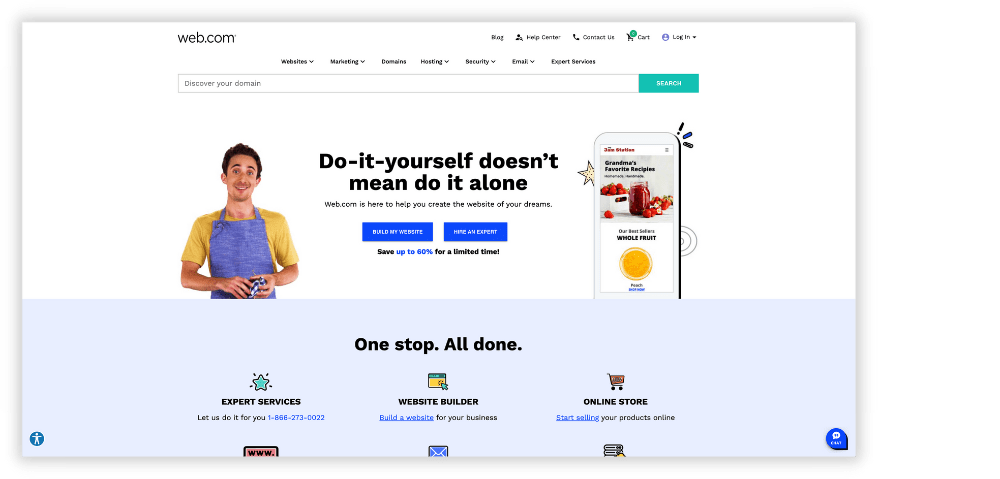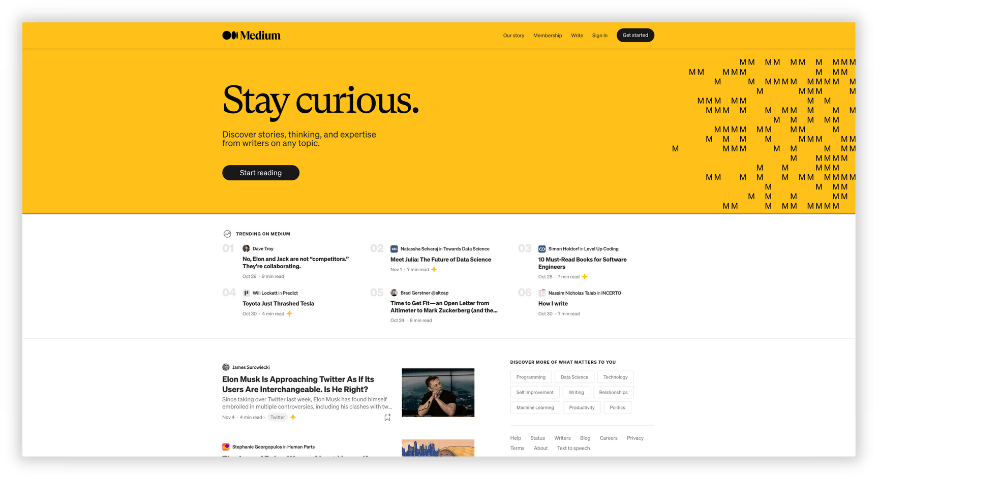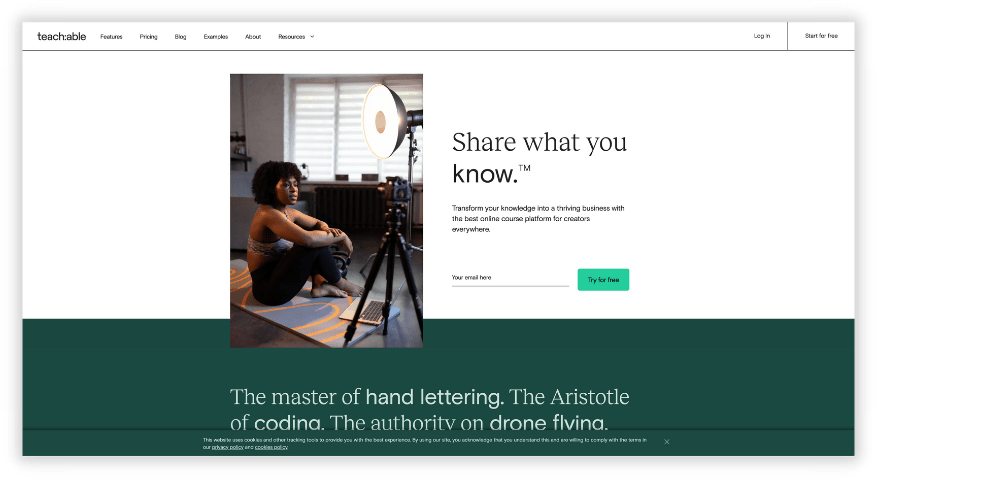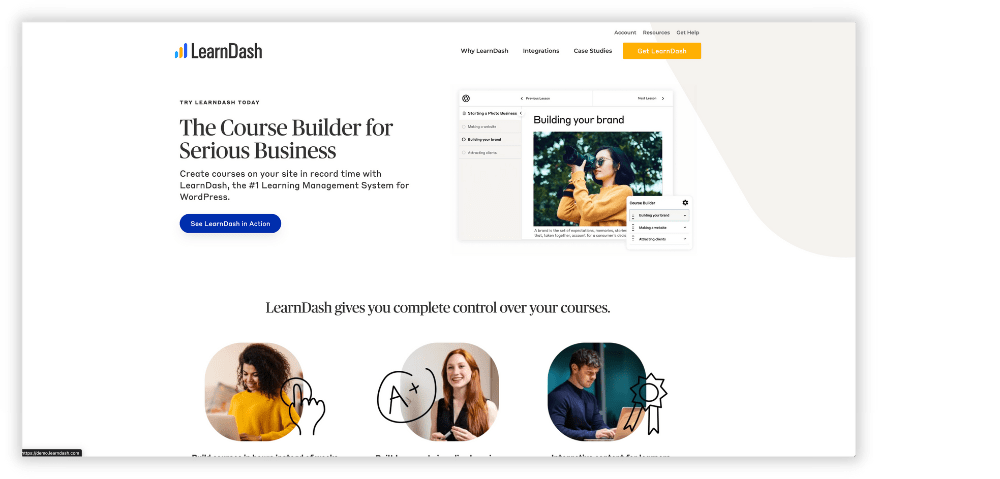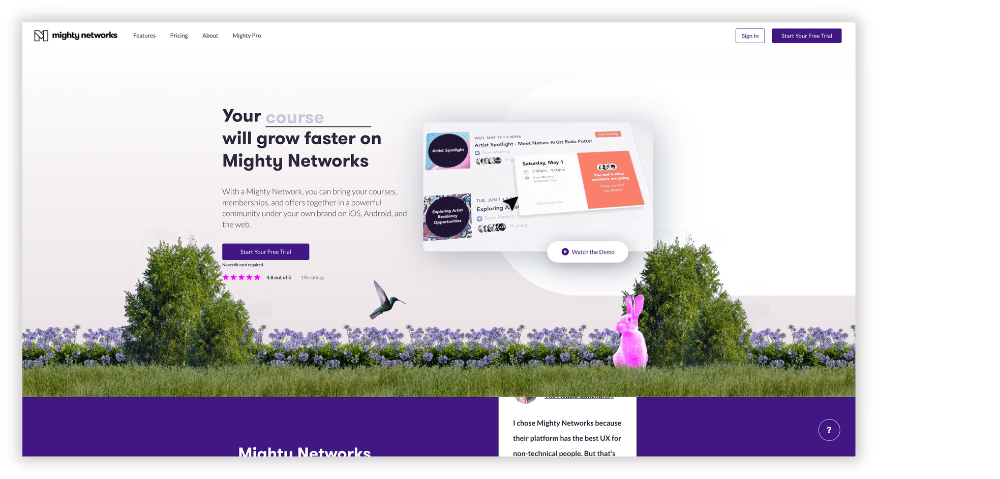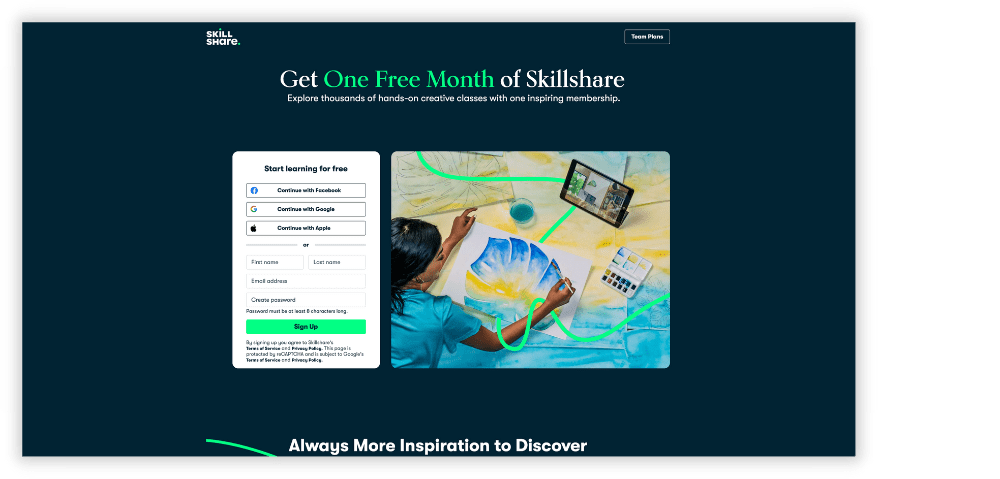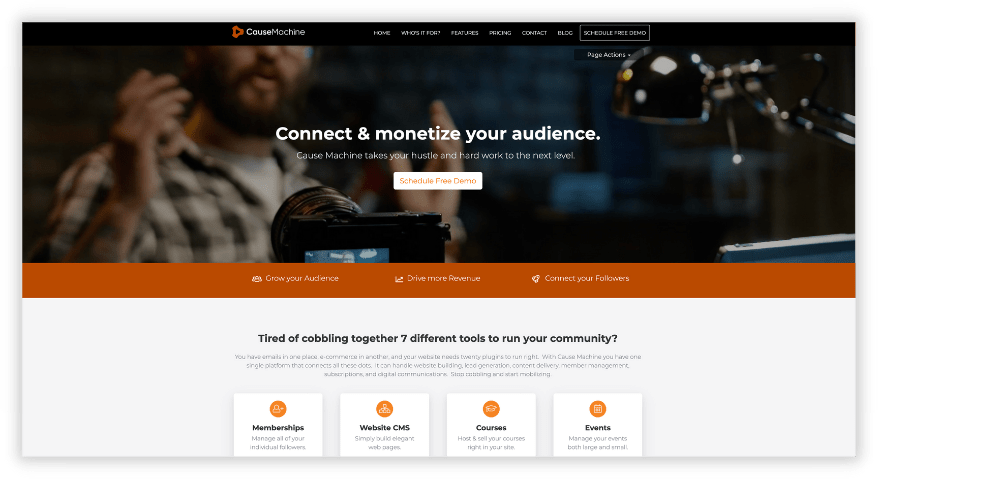What is Digital Engagement?
9 Best WordPress Alternatives for Building a Website
- Community
- Content Strategy
- Innovation
- and 4 more...

When it launched in 2003, Wordpress sparked something close to a digital revolution. Suddenly, almost anyone could make a professional-grade website packed full of high-quality content, and it now dominates the market.
Believe it or not, about 43 percent of all websites currently run on Wordpress1, making it the most popular website builder in the world. But it’s not the only option. And if you’re about to take the plunge, you should ask yourself:
What kind of WordPress alternatives are out there?
It’s true that Wordpress is a powerful tool, with things like drag-and-drop block editing, thousands of themes and countless plug-ins to choose from, but it can also get complex pretty quickly. Perhaps the plug-ins you’ve chosen are not compatible with each other… that happens. Or maybe you’re not up for the hassle of managing your own web hosting, with security and updates and all the rest.
Luckily, many WordPress alternatives exist. Some offer a simple approach, while others are extra flexible. Some emphasis e-commerce, while others are great for blogging. You just need to know what's right for you.
We’ve scoured the internet to compile a list of the 9 best WordPress alternatives for building a website, with hopes of giving you a fuller picture of the options.
1. Wix
Wix is probably the best-known Wordpress alternative, and there’s good reason for that. If you’re looking to keep things simple, Wix is great for building basic websites with a similar drag-and-drop model to Wordpress, but a more streamlined list of plug-in options to choose from.
2. Domain.com
Next up we have Domain.com, which excels in a few areas where Wordpress does not – right out of the box. While WordPress needs some customization before you can start selling goods and services, Domain.com comes ready-to-go with e-commerce capability. Good news if you need to set up shop.
3. Shopify
Then we have Shopify, and just by the name you can tell – it’s built for e-commerce. Shopify is one of the best Wordpress alternatives if you need a digital storefront, and with great-looking templates, payment option tools and 24/7 tech support, you get a professional feel without much heavy lifting.
4. Drupal
As far as rivals to Wordpress, Drupal is most popular with bigger organizations. If you’re looking to create a website with complex, one of a kind content at enterprise scale, Drupal is almost endlessly customizable, and highly adaptive. The drawback is you’ll need some technical know-how to set it up.
5. Squarespace
Squarespace is a great Wordpress alternative with a little something for everyone. Whether you’re building your first site for a new small business, or you’re a creative looking to showcase your work, it has a familiar drag-and-drop feel, and templates that often look better than the competition.
6. Hubspot
Searching for a high-tech solution? Hubspot’s CMS Hub is a powerful content management system – and its main draw is a fully-hosted platform, meaning it can handle all that pesky back-end maintenance on its own. Plus, with automated marketing tools and killer analytics, you get a lot of bang for your buck.
7. Ghost
Not all websites are intended to sell stuff – some are just there to deliver fantastic content – and if you are a writer of any kind, Ghost might be the way to go. With powerful SEO and publishing tools built right in, plus things like an RSS feed builder and full-picture editor, this is a great choice for creatives.
8. Web.com
Web.com is a good choice for Wordpress alternatives that don’t break the bank – or take over your life. Relatively inexpensive and easy, users can start by choosing from a list of templates. Or, with the added ability to make your own design, this option can also help you create a truly unique brand experience.
9. Medium
Another example in the world of Wordpress alternatives is Medium. Perfect for publishing text, you’ve probably read a column written by a celebrity on Medium in the past – even if you didn’t know it. It’s not as endlessly customizable as some of the others. But it’s clean looking if the written word is your thing.
In the end, this is still just a fraction of the website-building options out there, and it might sound like a lot to think about. Whether you just need a website or if you're looking to give your community a home, it’s a decision you can’t afford to sleepwalk into. Take the time to decide what works for you.
Get Started With Cause Machine
Starting with a community engagement strategy is the secret to building a successful platform in the long term. Cause Machine helps customers build the plan of engaging a community well and then begin mapping out the technology to help support that strategy. We’re certain that you’ll find some great resources and powerful tools in Cause Machine to better engage your community. Learn how it can work for you here.
5 Best Online Course Platforms to Grow Revenue
- Community
- Content Strategy
- Guiding People
- and 1 more...

Let’s start with a hypothetical. Say you’ve got some skills in an in-demand field—mad chops, like, so good it’s almost scary! Naturally, other people want them, too, and with the right online course platform, you can create and sell your own brilliant ideas.
That’s great! Since 2020 made virtual collaboration the norm, it’s easier than ever to share your knowledge with a global community… and get paid to do it. Your timing is perfect, but after a quick scan of the options, you’ve got a question.
How do I decide on the best online course platform for me?
To be honest, there are dozens of platforms out there, all serving a different need. Some are geared more toward creatives, while others offer amazing marketing tools. Some are endlessly customizable, while others use templates to get you up and running quick. Some let you control the data in your community. Your plan to spread knowledge (and monetize your mad skills) will have to wait, at least until you figure out where to host this game-changing course.
We’ve done the digging and picked out five gems from the heap—quite possibly the best online course platforms out there today. Then we broke them down so they’re easier to choose from, and the results are in.
5 online course platform options that serve a unique purpose.
1. Teachable
Teachable is widely considered one of the best online course platforms for beginners, since it has loads options to help first timers get started. You can build out simple courses with quick, pre-set template options and tips to get the most out of the program. And you also get access to student information, making marketing that much easier. But while it’s great for startups, you might want something more once you grow.
2. LearnDash
Next up is LearnDash, a learning platform that comes with one big advantage: It works with your existing WordPress website. That’s right, if you are one of the millions of people already hosting a website on WordPress, you can plug LearnDash right in. That does streamline things, but it also comes at a cost – you’ll need a bit of technical know-how to keep it running smoothly, in comparison to some other options.
3. Mighty Networks
Maybe the key to your success is a thriving, interactive community, one where you stay in constant contact with your members. Count Mighty Networks as a possible solution. You can use your existing social media following to build a network of potential students, and with live-streaming video uploads, your content will keep them engaged. When done right, your course could feel more like a social platform than school.
4. Skillshare
But what if the course you’re hoping to teach is in a creative field? Something like comic-book writing or… quilting… advanced finger painting? If that’s the case, you might want to check out Skillshare. With simple courses based on video lessons and projects to apply those lessons, it’s especially adept in creative fields. But, if the skill you’d like to share is more technical, you may need to look elsewhere.
5. Cause Machine
Enter Cause Machine, a purpose-built, all-in-one option. While other platforms can make it hard to centralize your digital footprint, Cause Machine is set up to do just that. Your website, podcast, events manager and online courses? They can all be in the same place. Members can interact with each other and take classes as a group, creating a more personal, engaged atmosphere, and whether your class is rooted in creative whimsy or hardcore data, you’re all set. Best of all, there’s no technical expertise required, and analytics are included, so it can grow as your business does. Check out some key features below:
-
Robust Event Management & Registration
-
Sell Online Video eCourses
-
Members-Only Original Content
-
Connect With Other Subscribers
-
Take Classes Together
In short, picking the best online course platform for you is an important decision, but it doesn’t have to be a chore.
Cause Machine Solutions
Here at Cause Machine, we help organizations solve complex community engagement problems/questions. We use these disciplines of innovation ourselves in our own development process and have helped lead many organizations through their own process of innovation discovery. Leveraging the Cause Machine platform for engaging your community helps you be confident that the foundations of this platform are built on time-tested best practices of great processes like innovation and design thinking. Schedule a FREE demo today!
Seven Types of Innovation

There are countless types of innovations you could facilitate - each with their own strategy, design, timeframe, and more. The important thing to know is that each type of problem you’re working to solve has a unique run of play for how that innovation should be facilitated. My goal here is to unpack seven core types of innovations to consider. It’s important that you help your client understand which innovation they are desiring before launching the event.
#1 Concept Sketch
Overview: A Concept Sketch Innovation is when there is a felt need and/or a basic idea with a very open minded or open-handed approach to how that might come to life.
Goal: The outcome from this innovation would be a fresh idea, in concept format, for how to approach this problem.
#2 Framework Design
Overview: A Framework Design Innovation is when there is a defined project/goal but there is a needed framework or picture needed to help simply capture the overall complexity.
Goal: The outcome from this innovation would be sketches of this framework (picture, pathway, etc.)
#3 Vetting Concept
Overview: A Vetting Concept Innovation is when there is a plan in motion and a fairly good picture of the desired goal, but a desire to “vet” out the concept more and gain more collaborative buy-in.
Goal: The outcome from this innovation would be more details to the plan, a stronger prototype of the concept, and greater unity around the vision.
#4 Business Plan
Overview: A Business Plan Innovation is when there’s an agreed upon plan already existing, but there is lacking a more comprehensive business plan with specific details for execution
Goal: The outcome from this innovation would be a multi-page business plan outlining specific Go to Market strategies.
#5 Resource Design
Overview: A Resource Design Innovation is when there is a need to design (or potentially redesign) a resource - focusing on the resource design, purpose, and delivery.
Goal: The outcome from this innovation would be the prototyping of fresh resources with some content creation and strategy.
#6 Process Design
Overview: A Process Design Innovation is when there is a new process (or a process to re-vision) and a need to collaboratively streamline and make a process.
Goal: The outcome from this innovation would be a process design map with detailed steps, dependencies, and outcomes.
#7 Rethink
Overview: A Rethink Innovation is when there is a pre-existing program that could use some fresh thought and fresh ideas.
Goal: The outcome from this innovation would be a new concept plan for how to approach this in a more current context.
As you can see, there are many types of innovations you could facilitate. More than likely, just seeing the list sparked a few ideas for innovations you might consider.
Cause Machine Solutions
Here at Cause Machine, we help organizations solve complex community engagement problems/questions. We use these disciplines of innovation ourselves in our own development process and have helped lead many organizations through their own process of innovation discovery. Leveraging the Cause Machine platform for engaging your community helps you be confident that the foundations of this platform are built on time-tested best practices of great processes like innovation and design thinking. Schedule a demo today!
Creating a Culture of Innovation

Creating a culture of innovation is no easy task. Truthfully, creating a culture of anything isn’t an easy task! But some things are more critical than others for what they mean to your culture. As we’ve unpacked before… innovation is far more a process than a skillset. This is important, especially if your goal is to create a culture of innovation because you can scale a process (but it’s difficult to scale skillset with limited human resources).
Before we talk specifically about innovation culture, it’s probably best to start with understanding and having some agreed upon idea about organizational culture in general. Let’s give this some definition or at least some talking points.
-
Co-Owned - people in your organization feel ownership and it’s not centralized with a person or a team
-
Repetative - the action or manifestation of that cultural idea is being repeating and lived out in various forms in your organization
-
Catalyst - there are core catalytic events and moments for bringing/driving this culture to life
-
Stewardship - there are dedicated people to “own” this cultural mandate and help see if become part of the overall organization
So then we dive into innovation culture and what makes that unique. Innovation culture is when an organization embraces a standard process approach to help solve organzational problems. It’s what happens when there’s a discipline to allow an objective process to help flush out better ways to solve a problem (than one person carrying that weight on themself). Let’s give this some more talking points as well.
-
Branding - give your process, space, and team a name - something that makes this unique to your organization
-
Dedicated Space - creation of a dedicated space to lead and facilitate innovation sessions
-
Defined Process - refining the innovation (or design thinking) processes to clarify your organization’s version and vernacular
-
Campaigns - starting with strong campaigns to get others on board, initiating early innovation sessions, and educating people
-
Facilitators - building a team of trained facilitators from across the organization
Lastly, it’s important to give people the opportunity to engage and leading them to how to make that step of engagement. While there are many ways to engage, here are three recommendations.
-
Participate - give people the opportunity to sign up and be a team member of an upcoming innovation
-
Submit - give team leaders the ability to submit innovation concepts for their team to have an innovation facilitated
-
Facilitate - request to be trained as a facilitator to learn the skillset and be on your roster of facilitators
In short, creating a culture of innovation is a discipline of activity and steadiness over time to see your process well leveraged for the betterment of organization. Add to our list here and get started creating your own culture of innovation!
Cause Machine Solutions
Here at Cause Machine, we help organizations solve complex community engagement problems/questions. We use these disciplines of innovation ourselves in our own development process and have helped lead many organizations throught their own process of innovation discovery. Leveraging the Cause Machine platform for engaging your community helps you be confident that the foundations of this platform are built on time-tested best practices of great processes like innovation and design thinking. Schedule a demo today!
The Four Keys to Unlocking Facilitation

Facilitation can seem like the daunting task of leading people through a meeting, discussion, or process. Truth is… it was (and sometimes still is) very intimidating for me as well. Some people are naturally gifted as facilitators but what I’ve learned in this over decades of facilitating countless sessions is that the best facilitators have a toolbox they leverage to help guide a group to a determined goal. I would like to unpack a number of these tools with you to help you better engage groups that you might lead.
The Golden Rule of Facilitation
Before we dig into some of these tools, I do need to stop and address one thing… your single most important goal as a facilitator. Stop for a moment and think about this principle.
Great facilitation leads to commitment, never consensus
I still remember the day my mentor in all of this explained to me this principle. I also can point to every successful facilitation to an alignment with this principle and the many failures of misalignment. Basically, you just can’t lead a group of people to a consensus, and truthfully, you don’t need to. That’s a myth and it’s going to consume your time and energy. But if you lead a group to commitment, then you can keep driving the overall plan and everyone has had a voice in that puzzle.
Tips and Tricks to Facilitation
-
Set Expectations - give everyone the opportunity to pour out their personal expectations and what they hope to get from the session. Come back to these expectations throughout your time together and check-in to see if the overall process is meeting their expectations. Also, guide the expectations that aren’t in alignment with the overall session goals - explain to people how that’s a good expectation but not one you’ll tackle in this session. And for expectations that didn’t feel fully met in the end, be sure to have a plan to follow up on those expectations after your time together.
-
Have a Structure - I’ve heard that meetings with six or fewer people don’t need much structure but the minute you’re over six people, you need a structural plan. I certainly agree with this idea… the larger the group the more structure is needed. So as you enter a meeting, or leading a facilitated session, have a structure for what you hope to accomplish: the flow, how each piece works, time frame, expectations, interactive components, etc. Your structure will set you up for success. And for example, something like an innovation will flow like this: Discovery, Brainstorming, Clustering, Sketching, Prototyping, and Presentations. This is just one structure model - the point is that you have one predefined.
-
Set Rules of Engagement (ROE) - there are so many ways we could engage in a meeting, we just need to know what the rules of engagement are for each type of session. People will go where you lead them… you just need to lead them. You need to set ROE for what to contribute, what not to contribute, how to engage, what happens if you get off course, etc. For example, in a brainstorming session, you would instruct people to write one idea per sticky note, write with a Sharpie, say their ideas out loud, explain it’s okay to have repeated and instruct them that criticism isn’t allowed. Simple ROE like this sets everything up for better success.
-
Guide People - yeah, it’s simple, but people need guidance and they need you to lead them to the end goal. The end goal isn’t what you’re going to produce… it’s what they produce and it’s following the process to help get you there. But they need (and the process needs) a guide to lead people to that goal. Facilitation could really be simplified into one word… guidance. This is the privilege and responsibility you have as the facilitator.
Well, there are many more, but there was a good start on some of those tips and tricks that make a world of difference in how you facilitate a session.
Cause Machine Solutions
Here at Cause Machine, we help facilitate strategy and innovation sessions for many types of community engagement strategies - it’s part of what we do, believing that community engagement is a mix of strategy and technology. We hope these articles will help you better build your community engagement plans. Schedule a demo today!

